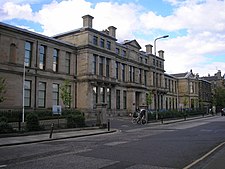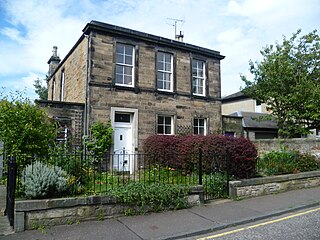
Sciennes is a district of Edinburgh, Scotland, situated approximately 2 kilometres south of the city centre. It is a mainly residential district, although it is also well-known as the site of the former Royal Hospital for Sick Children. Most of its housing stock consists of terraces of four-storey Victorian tenements. The district is popular with students, thanks to its proximity to the University of Edinburgh. Its early history is linked to the presence in the area of the 16th-century Convent of St Catherine of Scienna, from which the district derives its name.

Newington is a neighbourhood of southern Edinburgh, Scotland. Developed from the early 19th century, it is an affluent, predominantly residential area.

The Western General Hospital is a health facility at Craigleith, Edinburgh, Scotland. It is managed by NHS Lothian.
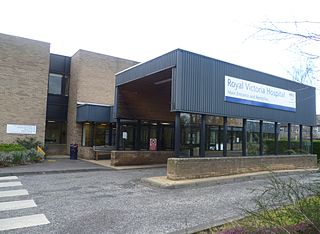
The Royal Victoria Hospital was a health facility at Craigleith Road in the north-west of Edinburgh, Scotland. It was formerly the main Medicine for the Older Adult assessment and rehabilitation hospital for the north of Edinburgh. It closed in 2012, then briefly reopened to ease pressure on acute beds in the region. The facility finally closed in early 2017 and was not in use when a fire caused damage to buildings in May 2017. It was managed by NHS Lothian.
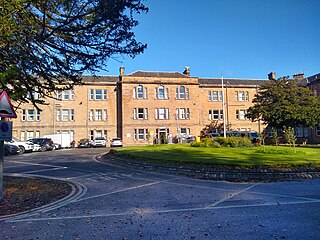
The Royal Edinburgh Hospital is a psychiatric hospital in Morningside Place, Edinburgh, Scotland. It is managed by NHS Lothian.

The Royal Infirmary of Edinburgh (RIE), often known as the Edinburgh Royal Infirmary (ERI), was established in 1729 and is the oldest voluntary hospital in Scotland. The new buildings of 1879 were claimed to be the largest voluntary hospital in the United Kingdom, and later on, the Empire. The hospital moved to a new 900 bed site in 2003 in Little France. It is the site of clinical medicine teaching as well as a teaching hospital for the University of Edinburgh Medical School. In 1960, the first successful kidney transplant performed in the UK was at this hospital. In 1964, the world's first coronary care unit was established at the hospital. It is the only site for liver, pancreas and pancreatic islet cell transplantation and one of two sites for kidney transplantation in Scotland. In 2012, the Emergency Department had 113,000 patient attendances, the highest number in Scotland. It is managed by NHS Lothian.

Linlithgow is a town in West Lothian, Scotland. It was historically West Lothian's county town, reflected in the county's historical name of Linlithgowshire. An ancient town, it lies in the Central Belt on an historic route between Edinburgh and Falkirk beside Linlithgow Loch. The town is situated approximately 20 miles (32 km) west of Edinburgh.

The Edinburgh Royal Maternity and Simpson Memorial Pavilion was a maternity hospital in Lauriston, Edinburgh, Scotland. Its services have now been incorporated into the Royal Infirmary of Edinburgh at Little France.

Bangour Village Hospital was a psychiatric hospital located west of Dechmont in West Lothian, Scotland. During the First World War it formed part of the much larger Edinburgh War Hospital.
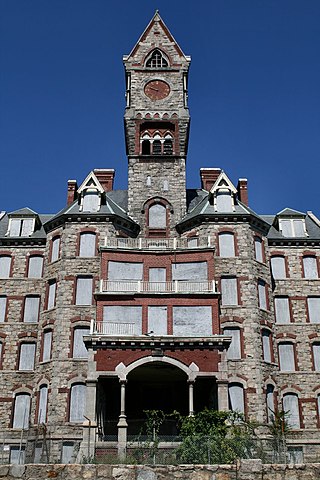
Worcester State Hospital was a Massachusetts state mental hospital located in Worcester, Massachusetts. It is credited to the architectural firm of Weston & Rand. The hospital and surrounding associated historic structures are listed as Worcester Asylum and related buildings on the National Register of Historic Places.

Craig House is a historic house and estate located on Easter Craiglockhart Hill, between the Craiglockhart and Morningside areas of Edinburgh, Scotland. Old Craig House dates from the 16th century, and succeeded an earlier building. In the late 19th century it was purchased by the Royal Edinburgh Hospital, and the site was developed as Craig House Hospital, a psychiatric hospital, including substantial new buildings. Following refurbishment, the site was opened in 1996 as the Craighouse Campus of Edinburgh Napier University.
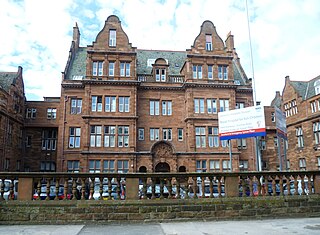
The Royal Hospital for Sick Children was a hospital in Edinburgh, Scotland, specialising in paediatric healthcare. Locally, it was commonly referred to simply as the "Sick Kids". The hospital provided emergency care for children from birth to their 13th birthday, including a specialist Accident and Emergency facility. Some in-patient specialties saw children up to their 16th birthday. The hospital was located on Sciennes Road in the Sciennes area of Edinburgh's South Side and was managed by NHS Lothian. It moved in 2021 to the new Royal Hospital for Children and Young People in Little France.
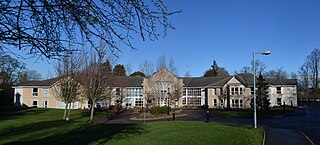
Ellen's Glen House is a facility providing services to elderly and mentally ill patients in Liberton, Edinburgh, Scotland. It is managed by NHS Lothian.
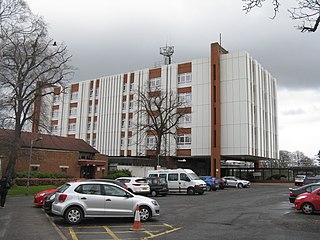
Liberton Hospital is a facility for geriatric medicine on Lasswade Road in Edinburgh, Scotland. It is managed by NHS Lothian.

Erskine is a veterans care and support charity headquartered in Erskine, Renfrewshire, but operating across the Central Belt of Scotland. It provides a range of services to British Armed Forces, veterans of all ages and their families, who have settled in Scotland. It is most renowned for long-term nursing, respite, dementia and end-of-life medical care. It supports veterans through care homes and a Veterans Village, comprising 44 cottages, a community activity centre, five assisted living apartments and 24 "Transition Support" apartments for service-leavers and working-age veterans. The charity first established itself as Princess Louise Scottish Hospital for Limbless Sailors and Soldiers. It was created through Scotland's compassionate response to her sons returning physically and mentally shattered by the horrors of trench and naval warfare in the First World War. Its name was then shortened to Erskine Hospital and then simply "Erskine" in later years. The charity has gone on to offer help to British veterans of every subsequent war and become the biggest veterans facility in the country.
The Princess Margaret Rose Orthopaedic Hospital was a hospital in Fairmilehead, Edinburgh, opened in 1932 and closed in 2000. After closure, with services transferred to the new Royal Infirmary of Edinburgh, it was demolished and the site sold for housing.

The Royal Dundee Liff Hospital, previously known as Dundee Lunatic Asylum and Dundee Royal Lunatic Asylum, was a mental health facility originally established in 1812 in Dundee, Scotland. It was originally located in premises in Albert Street Dundee, but later moved out of the town to new buildings in the nearby parish of Liff and Benvie. Buildings at Liff included Greystanes House, which was the main building, and, Gowrie House, which was the private patients' facility. Both Grade B listed buildings.
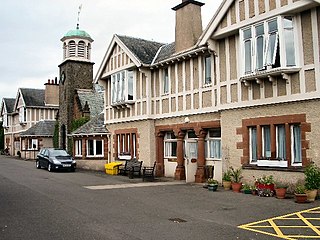
The Murray Royal Hospital is a mental-health facility in Perth, Scotland. It is managed by NHS Tayside. The original main building is a Category A listed building.
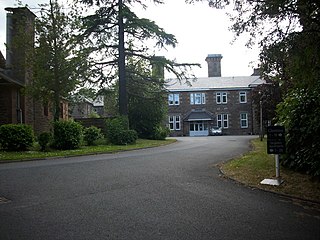
Dingleton Hospital was a mental health facility in Melrose, Scotland. The former boiler house is a Category B listed building.

The Royal Northern Infirmary was a health facility in Ness Walk, Inverness, Scotland. The site remains the home of a small facility, known as the RNI Community Hospital, which was built in the grounds of the old hospital and is managed by NHS Highland.
